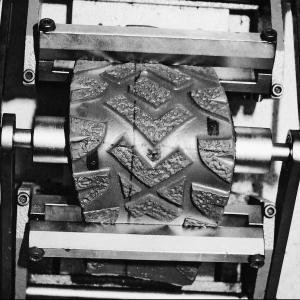Test Method: SATRA TM161
Bennewart flex test - resistance to cut growth on flexing
November 2004

SCOPE
This method is intended to determine the resistance of a component or material to cut growth during repeated flexing. It can also be used to assess the effect of surface patterns on crack initiation and growth. The method is especially applicable to the outsoles of footwear (having approximate minimum size 1 UK, 33 Paris Points), but may also be used with certain other flexible components.
PRINCIPLE
Method 1 - Cut growth of a footwear outsole
The flexing line of a test outsole during normal wear or use is determined. Three standard cuts are made parallel to the flexing line and through the thickness of the outsole at points, which are considered to experience the highest tensional strains. These will be at or close to the flexing line. The specimen is then repeatedly flexed through 90° on the flexing line, for a fixed number of cycles and the cut growth measured.
Method 2 - Crack initiation and growth
The test is conducted in the same way as method 1 except that no cuts are made in the test specimen. At regular intervals throughout the test the number of cracks which form and their severity are recorded.
Method 3 - Cut growth of material
A standard cut is made through the full thickness of a rectangular specimen of the material. The specimen is then repeatedly flexed through 90° for a fixed number of cycles and the cut growth measured.
REFERENCES
BS903: Part A38 – Methods for the determination of dimensions of test pieces and products for test purposes.
DIN 53522: Part 3 – Determination of resistance to cut growth.
Test Method: SATRA TM60 – Ross flex test - resistance to cut growth on flexing.
HISTORY
First issued June 1992. Revised January 2002, November 2004.
AVAILABILITY
This test method is available to members and non-members.
PRICE (ex. VAT)
This price is for a printed copy of the Test Method.
- Members: £80
- Non-members: £230


 EN
EN ZH
ZH